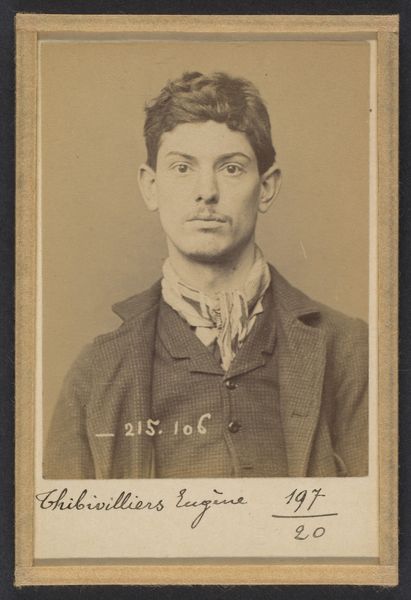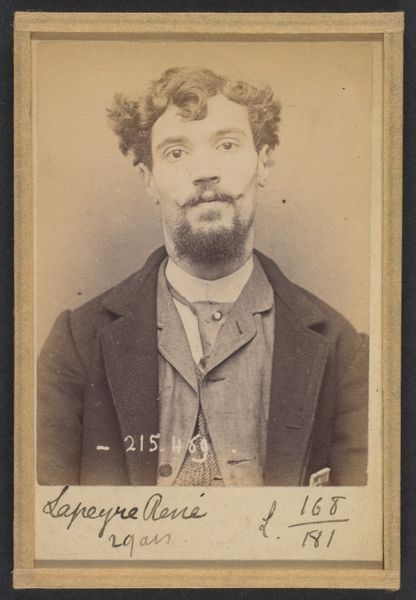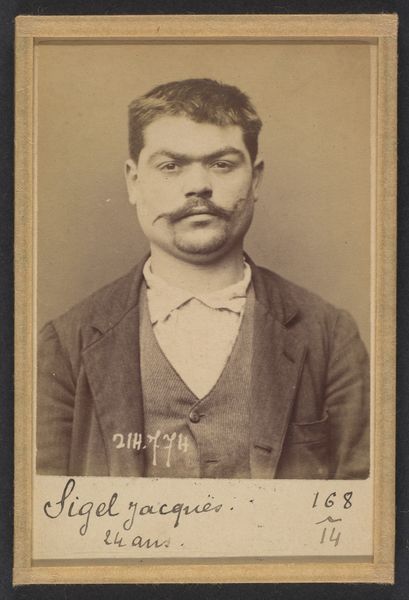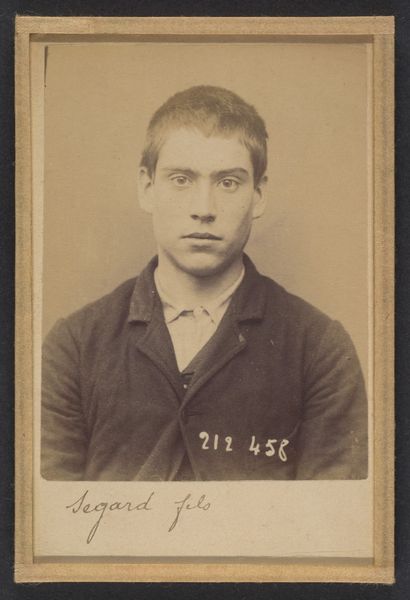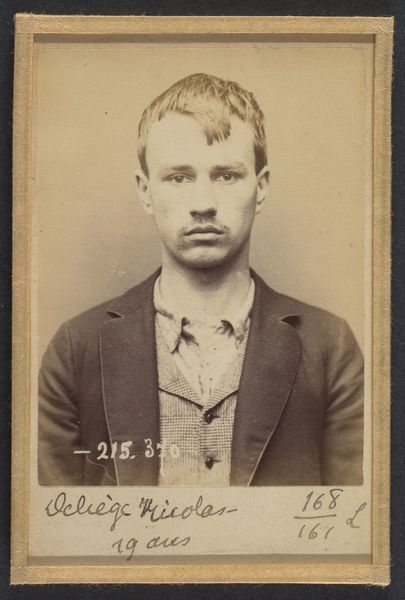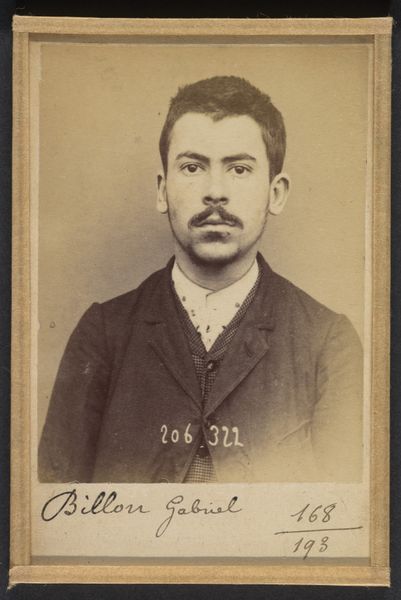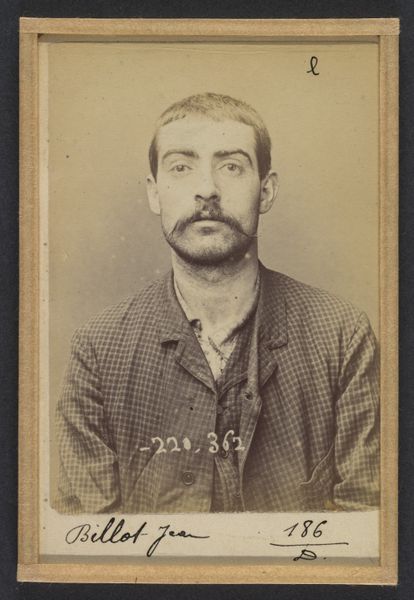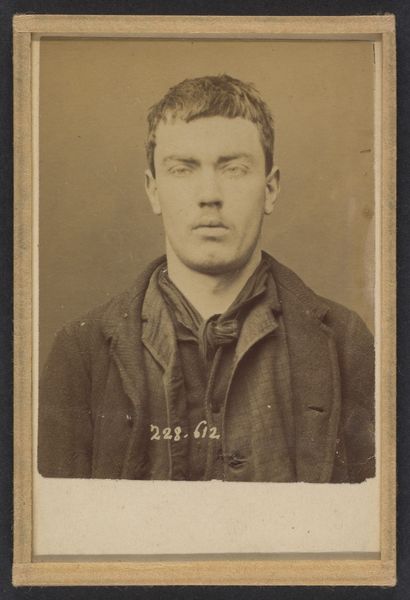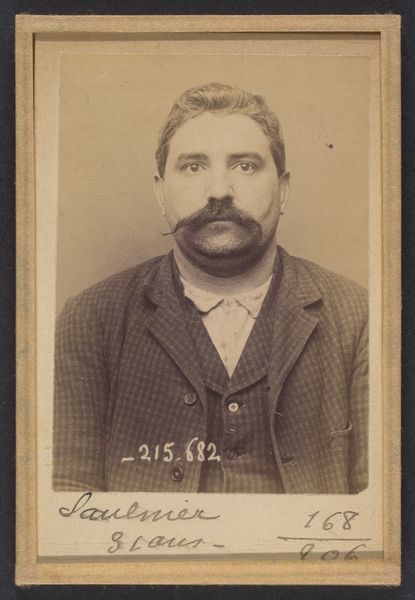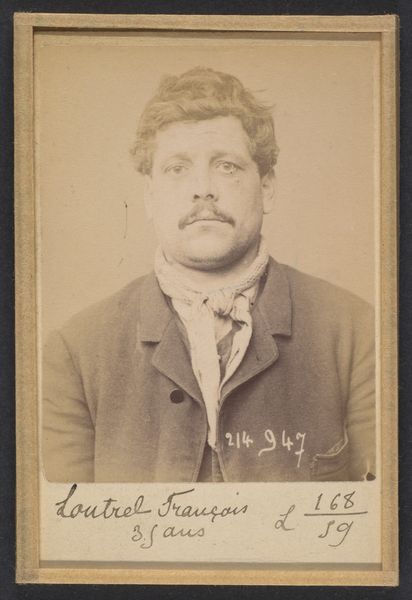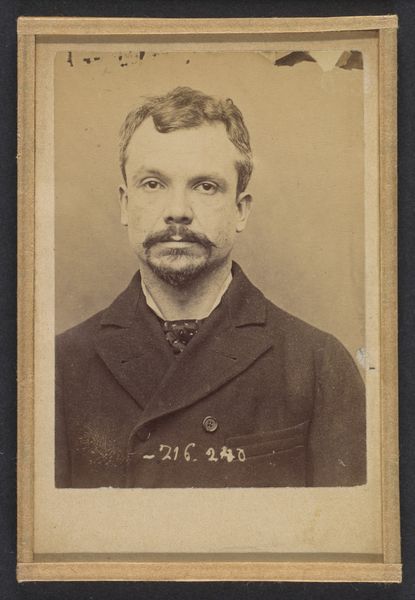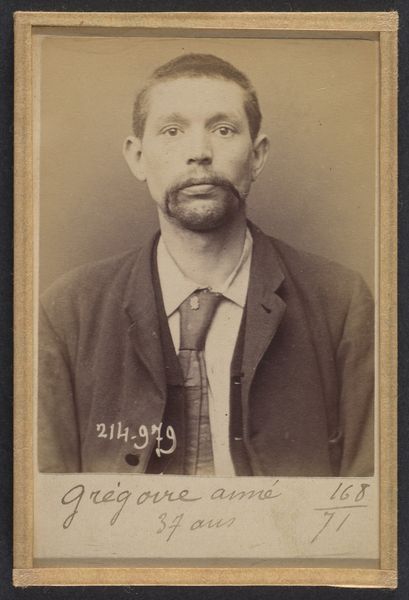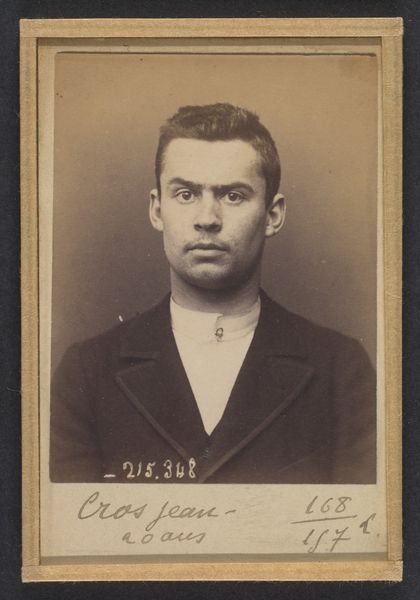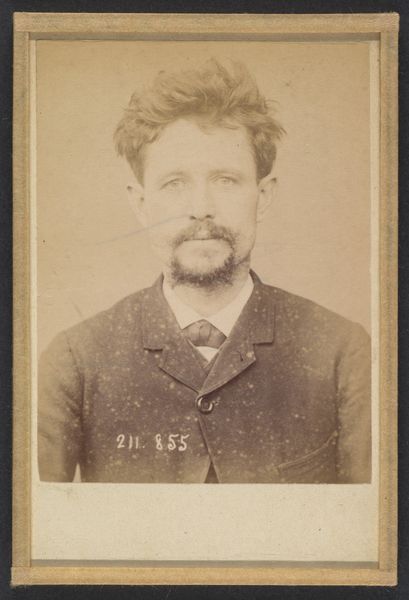
Nic. Celestin. 20 ans, né à Conflans-St-Honorine (Seine & Oise). Emballeur. 26/2/94. 1894
0:00
0:00
photography
#
portrait
#
portrait
#
photography
#
realism
Dimensions: 10.5 x 7 x 0.5 cm (4 1/8 x 2 3/4 x 3/16 in.) each
Copyright: Public Domain
Curator: This photograph, taken in 1894, is attributed to Alphonse Bertillon. It's titled, rather directly, "Nic. Celestin. 20 ans, né à Conflans-St-Honorine (Seine & Oise). Emballeur. 26/2/94." It's currently held at the Metropolitan Museum of Art. Editor: The sitter has such a solemn look; he peers right through the lens, unflinching. The sepia tones add to this sense of gravity. And there's this inscription too - it gives a clinical air, yet I can't help but read a human story in his face. Curator: You know, these aren’t just portraits; they're part of Bertillon’s system of criminal identification called "Bertillonage". This photographic technique was paired with precise body measurements and aimed to categorize and track recidivists. He wanted a new form of legal control and data at his fingertips. Editor: So, while ostensibly a factual record, it's absolutely steeped in power dynamics. It positions the subject not as an individual, but as data. A unit to be filed, quantified, and managed. Consider what the context implies about who is behind, and in front of, the camera. A young man being reduced. Curator: Absolutely, but there's a vulnerability in the gaze that transcends the objectifying nature of the process. His clothing is working class with his plain button down and unostentatious blazer, but his stare makes it seem that he's asking a silent, inquisitive question. Does the subject have any agency left? It seems, at the least, like an appeal for empathy. Editor: I'm captivated by the use of photography. At the time, the photographic medium was being increasingly tied to ideas of scientific truth, bolstering the presumed objectivity of the state. But these portraits betray the artifice of those claims. The cracks show when we remember his age, place of birth, and his work are displayed for us to ponder upon. Curator: True, seeing the human details offers another perspective into the picture itself. "Emballeur"—a packer—at 20 years old, just trying to make a life. You find yourself wondering about Celestin. Editor: Ultimately, this photograph raises some profound questions about surveillance, identity, and how systems attempt to contain human complexity. Curator: Absolutely. Art reminds us of that potential tension. The individual versus the system is present, even when the image is over 100 years old.
Comments
No comments
Be the first to comment and join the conversation on the ultimate creative platform.
